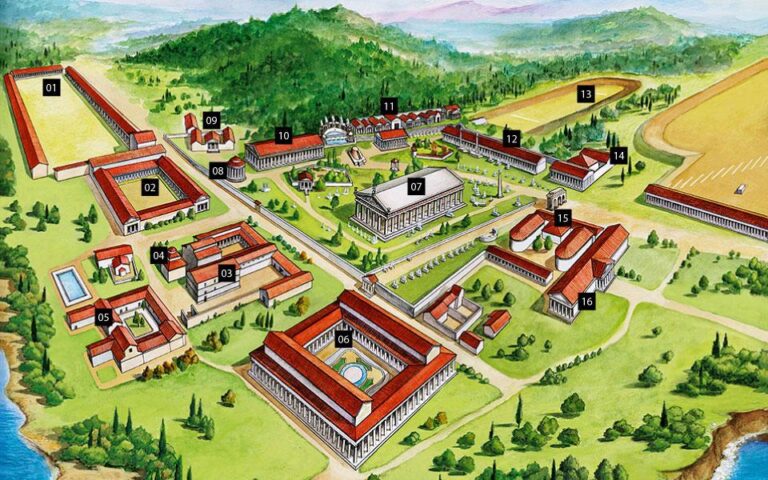Archaeologists have uncovered a remarkable Ancient Greek sanctuary dating back to the Hellenistic era inside a cave in Italy, shedding new light on the region’s rich historical tapestry. The discovery, announced by experts involved in the excavation, reveals well-preserved artifacts and architectural elements that offer valuable insights into religious practices and cultural exchanges during a pivotal period of Mediterranean history. This unprecedented find highlights the enduring influence of Greek civilization beyond its traditional heartlands and opens fresh avenues for research into ancient worship sites embedded within natural landscapes.
Discovery of Hellenistic Era Sanctuary Sheds Light on Ancient Greek Religious Practices
Archaeologists have uncovered a remarkable sanctuary dating back to the Hellenistic period inside a cave nestled in southern Italy. This rare find offers invaluable insights into the spiritual lives of ancient Greek communities far beyond the traditional borders of Greece. The sanctuary displays intricate altars, votive offerings, and inscriptions that hint at a syncretism of local Italic and Greek deities, demonstrating a unique fusion of cultural and religious identities during this era.
The excavation revealed several noteworthy features:
- Stone altars carved directly into the cave walls, indicating ritualistic sacrifices.
- Clay figurines representing gods and worshippers, suggesting diverse devotional practices.
- Greek inscriptions that include prayers and dedications to deities such as Apollo and Artemis.
| Element | Significance | Estimated Date |
|---|---|---|
| Stone Altars | Sacrificial ceremonies | 3rd Century BCE |
| Clay Figurines | Devotional objects | 2nd Century BCE |
| Greek Inscriptions | Religious dedications | Late 3rd Century BCE |
Archaeological Insights Reveal Unique Cave Setting and Ritual Artifacts in Italy
Recent excavations in southern Italy have unearthed a rare Hellenistic sanctuary ingeniously carved within a natural cave system, shedding new light on the regional interplay between Greek and Italic religious practices. The site’s unique topography, characterized by an intricate network of chambers and niches, appears to have been meticulously adapted for ceremonial purposes. Archaeologists have identified fresco fragments and stone altars, suggesting the cave served as an intimate venue for private worship and community rituals. The spatial arrangement implies deliberate orientation toward celestial events, a feature that aligns with known ancient Greek sanctuaries but remains exceptionally preserved here.
Among the most compelling finds are ritualistic artifacts that include:
- Bronze votive offerings, crafted in the shape of animals and symbolic figures;
- Ceramic libation vessels inscribed with Greek dedications;
- Carved marble reliefs depicting mythological scenes associated with local deities.
These discoveries have allowed researchers to construct the following overview of the sanctuary’s layout and artifact types:
| Feature | Description | Significance |
|---|---|---|
| Main Altar | Large stone altar with inscriptions | Centerpiece for ritual activities |
| Votive Deposits | Clusters of bronze and terracotta figures | Indicate offerings to gods |
| Fresco Panel | Partial wall painting with mythological motifs | Visual narrative of religious beliefs |
Preservation and Future Research Recommendations for Newly Unearthed Sanctuary Site
To ensure the longevity of this remarkable Hellenistic sanctuary, immediate steps must focus on environmental stabilization and controlled access. The cave’s microclimate poses both a challenge and an opportunity, requiring tailored humidity and temperature regulation measures to combat natural deterioration. Experts advocate for the installation of discreet monitoring devices to track these variables in real time, enabling proactive conservation efforts. Furthermore, limiting visitor numbers through a permit system will minimize human impact while still allowing scholarly engagement and public education.
Looking ahead, interdisciplinary research is essential to unlock the full historical and cultural significance of the site. Priority areas include:
- Advanced 3D mapping to document structural details and inscriptions.
- Material composition analysis to trace the origins of construction materials and artifacts.
- Comparative studies with contemporaneous Hellenistic sanctuaries across the Mediterranean.
| Research Focus | Methodology | Expected Outcome |
|---|---|---|
| Digital Reconstruction | Laser scanning | 3D site model |
| Material Sourcing | Isotope analysis | Origin of stones and pigments |
| Contextual History | Comparative literature review | Regional cultural links |
To Wrap It Up
The discovery of the ancient Greek sanctuary deep within an Italian cave offers a remarkable glimpse into the Hellenistic era’s religious practices and cultural reach. As archaeologists continue their work, this finding promises to shed new light on the interactions between Greek settlers and indigenous communities in the region. Further research and excavation are expected to reveal more about the sanctuary’s role and significance, providing historians and scholars with valuable insights into a pivotal period of Mediterranean history. GreekReporter.com will keep following updates on this exciting development.




